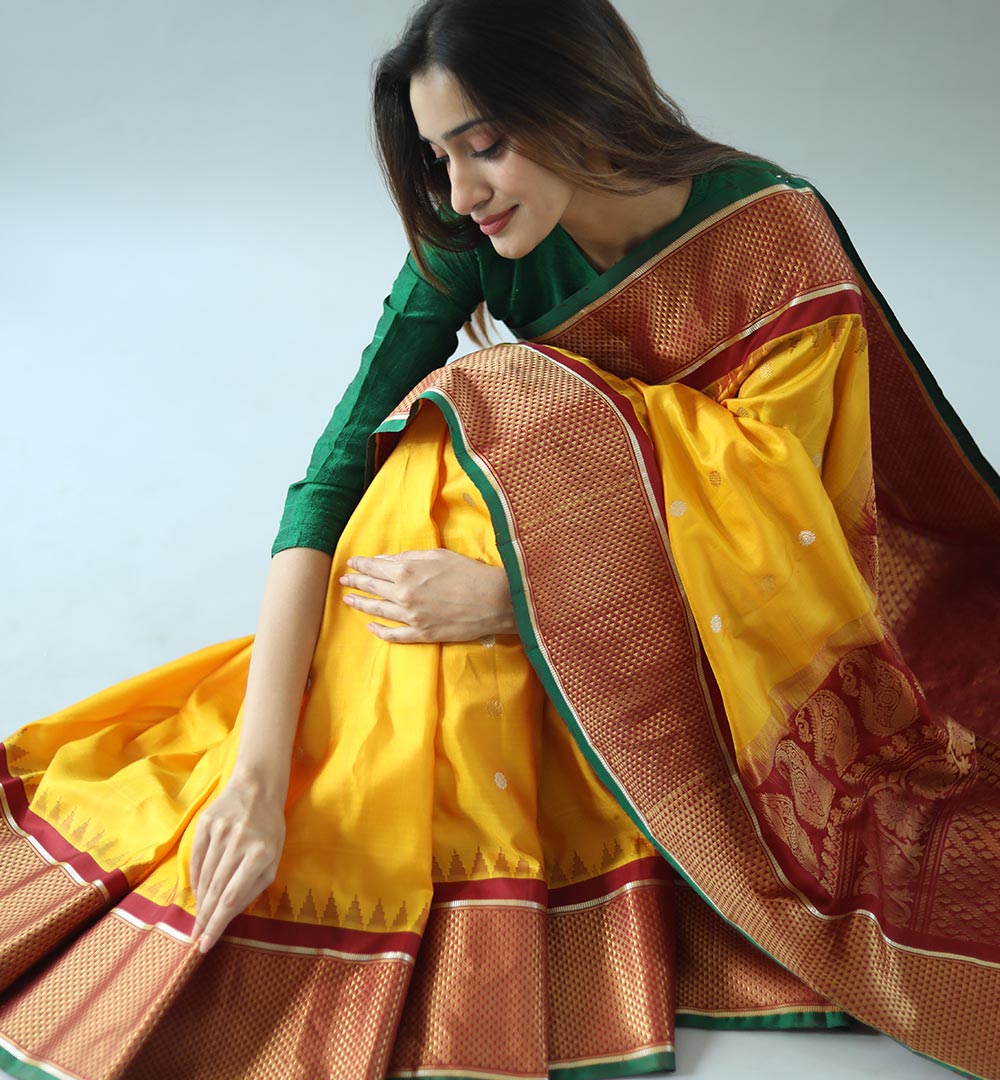Ugadi - New Beginnings, Newer Sarees
As the sun peeps out on the 1st day of the Hindu Lunisolar calendar in Andhra Pradesh, Telangana, and Karnataka, scenes of people having purifying oil baths, women donning exquisite silk sarees, and aromas of Pachadi, Bevu Bella, and Mavinakayi Chitranna wafting through households behold us with awe.
Significance of Ugadi
Ugadi marks the arrival of the new year and the birth of the Spring season. ‘Yuga’ (i.e. age/period) and ‘Adi’ (meaning beginning) combine to form Ugadi and is said to be the day Lord Brahma created the universe.
The day also holds astronomical significance in that it is the starting day from which the earth receives maximum sunlight for 21 days straight. For the crowd that believes in Yugas, Ugadi marks the beginning of Kaliyug or the day when Lord Krishna began his Nirvana.
Celebrations During Ugadi
The festivities on Ugadi in South India are usually brimming with enthusiasm, religious humility, and camaraderie among people. People adorn their homes with rangoli, flowers, and toran (a decorative hanging fixture made of paper mango leaves) and savour delectable recipes like Bele Holige, Kosambari, and Bonda.
For the deeply religious, paying a visit to the nearby temple and offering prayers to God is a must-do for the Ugadi checklist. It’s also not uncommon to find people going over to neighbouring and relatives’ homes with sweets and smiles to ring in the new year!
Dressing Up on Ugadi
The days leading up to Ugadi can be quite a dress-shopping extravaganza. Kanjivaram, Banarasi silk saree, and Mysore silk sarees are some of the choicest and colourful types that women embrace during the fanfare. You can also find men dressing up in regal and traditional dhotis, angavastrams, and kurta-pyjamas.
If you haven’t already, it’s time to spruce up your saree wardrobe with uber-elegant Kanchipuram silk sarees that blend finesse and heritage into your style. These handcrafted sarees that come in spring hues of bright red, daffodil yellow, and tangerine orange are guaranteed to take your Ugadi look to a whole new level. When paired with mildly glamorous gold jewellery, these sarees can be the life of Ugadi celebrations.
Women who appreciate fine work on sarees like intricate floral and foliate motifs can bring a bouquet full of grace through Banarasi silk weaves. The zari woven into Banarasi sarees are second to none, with Kalga and Bel motifs dominating the design. Regarded as some of the most ethnic and gorgeous festive wear in the south, Banarasi sarees are a great option for the upcoming Ugadi celebrations.
Gadwal, Pochampally, and Uppada weaves are also quite popular among saree connoisseurs in Andhra and Telangana for Ugadi. While Gadwals are characterised by their gold-and-silver zaris and a light-as-feather feel, Pochampally Ikat sarees have a smooth texture and sport elaborate geometric patterns. Weavers painstakingly work for 2-3 weeks to make one Uppada Jamdani saree, which is uber-soft, woven from silk and pure lace and contains geometric patterns, flowers, and leaves designs.
A recent fashion trend that has captured onlookers during Ugadi is the popular use of salwar kameez. Whether you deck up in a dazzling embroidered kurta and plain dupatta or rock a flowing Tussar salwar with a complementing coloured dupatta, you can style up without a second thought in this attire on this auspicious day.
Wrapping Up, Literally
It is imperative to celebrate this festival of spring with lots of prayers, happiness, and style. Embrace new beginnings on Ugadi with a la mode Tulsi Madras sarees, from the house of Tulsi. Here you can find handwoven Kanchipuram, Banarasi, and Tussar silk sarees that can make eyes turn instantaneously. Head over to explore our breathtaking collections.


